#*tharntype
Explore tagged Tumblr posts
Text
QUICK! Choose Your from My Faves: Horny Lift and Carry Edition
It's a new month! So I'm back with another poll. I actually had already made another poll but this one came to me whilst I was making the first one so I decided to do this one instead.
Anyways, I know we all love a good lift scene in general, but we're talking specifically about the horny ones. You know where he lifts the other he and carries him somewhere else so they can get it in? The ones where you can feel all the desire and desperation to get the going.








As always if you do not see your faves here I either forgot about it or haven't actually seen that series...or it didn't quite fit the theme I had in mind.
Also if you vote and don't mind reblogging, please do so more people can pick their fave from my faves.
#see your love#the boy next world#boy next world#love in the big city#this love doesn't have long beans#kiseki: dear to me#wedding plan#love sea#tharntype the series#tharntype#shao peng x zi xiang#cirphu#go young x young su#lomnuea#oabplawan#rakmut#chen yi x ai di#i'm gonna start a poll tag lol#choose your fave from my faves
218 notes
·
View notes
Text
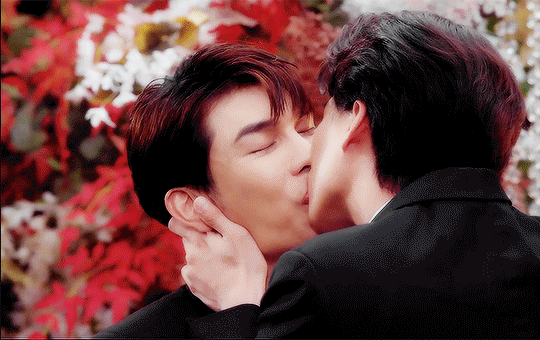
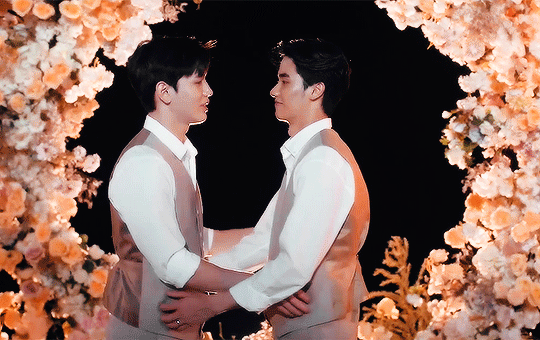
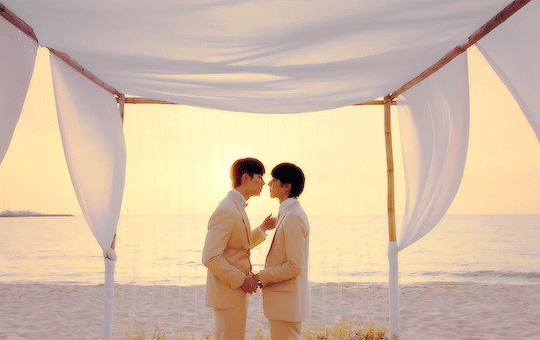
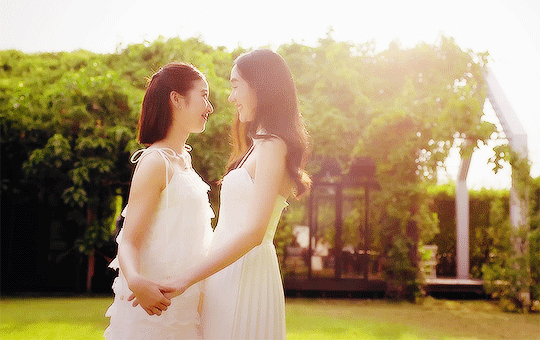
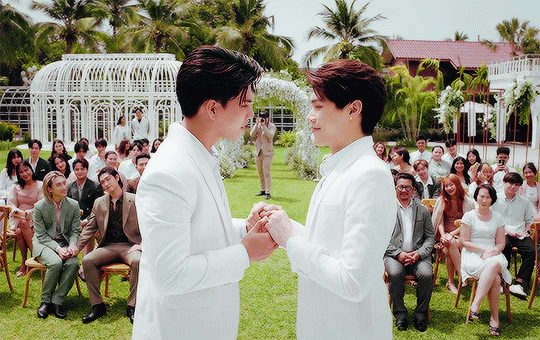
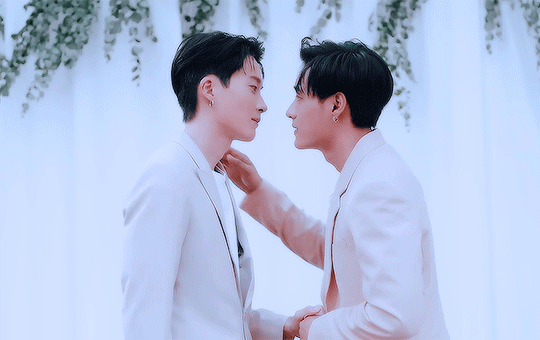
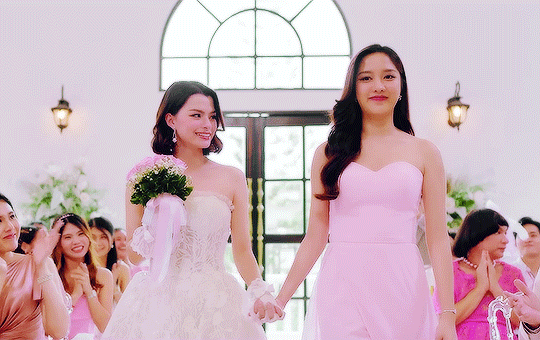
happy marriage equality to my favorite brides and grooms 🏳️🌈🥹🫶🏻
#bl drama#gl drama#marriage equality#this goes out to them and them only#😭😭😭😭#series in order:#tharntype#cherry magic th#cutie pie#wedding plan the series (2x)#my secret love#gap the series#karanachi#liankuea#prapaisky#gap yuri#freenbecky#what a glorious day 🥺#also still cant get over the fact that karan and achi predicted this like how insane djkhgfd#so happy for all of them#and everyone who fought#im proud of you#you deserve this#we all do#much love from my side of the world#🧡💜❤️💙
734 notes
·
View notes
Text







#the boy next world#the boy next world the series#cirphu#bossnoeul#mame series#mame#the tharntype spinoff#thai bl#thai ql#cir x phu#boss x noeul#fyeahthaidramas
309 notes
·
View notes
Text
15 Day BL Challenge - Day 9
Day 9: Most Visually Pleasing Love Scene
(I took into account the love scenes and the heavy making out sessions)
The Sign the pink one
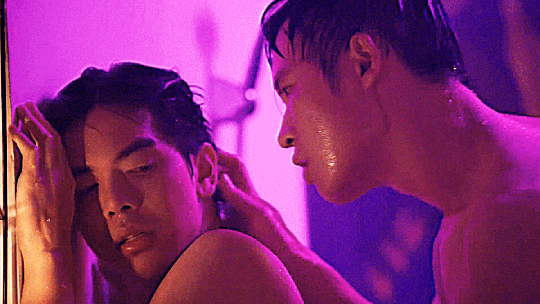
TharnType the ice cube one (please don't hate me 🥺)
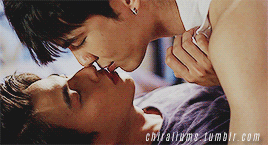
every MaxTul scene, I mean.. come on, it's them

every scene of Kinn and Porsche

Siew Sum Noi - IG and Ruk scene
Be Loved in House: I Do
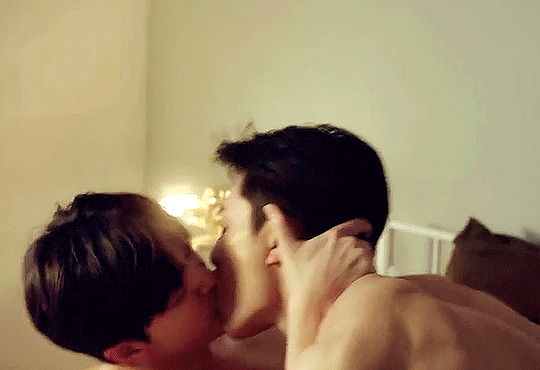
Love Class 2 this scene

gif by @nanihirunkits
Twins both scenes, I especially like this one
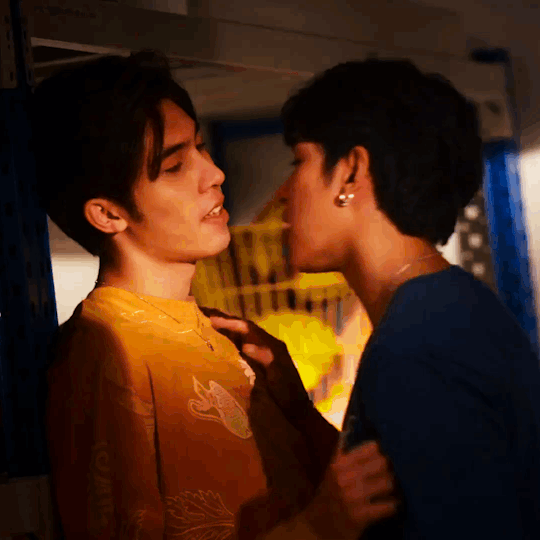
Ghost Host, Ghost House this scene

every DaouOffroad scene in Century of Love and Love in Translation
cold blue:
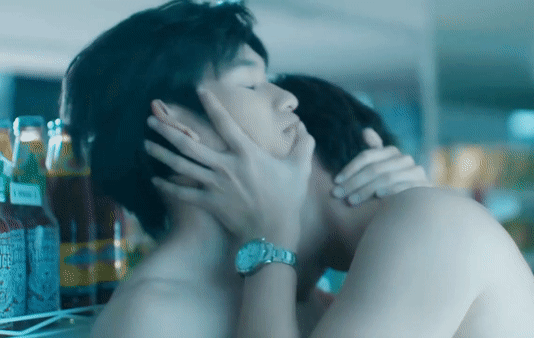
red hot:

Destiny Seeker

The Eighth Sense so beautiful

Bake Me Please both their scenes
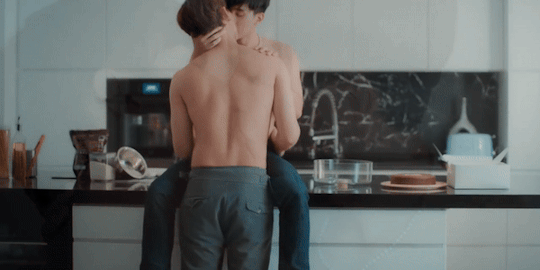
4 Minutes all scenes, it's the same as with KP

well I'm not 😭
#blchallenge2k24#bl drama#thai bl#korean bl#taiwanese bl#the sign the series#kinnporsche#tharntype#maxtul#love class 2#siew sum noi#be loved in house: I do#twins the series#ghost host ghost house#daouoffroad#destiny seeker#bake me please#the eighth sense#4 minutes
382 notes
·
View notes
Text

i honestly don't know if someone has already pointed this out or made this correlation but i think the reason all of us are finding thamepo to be so nostalgic and romantic in the [remembers your phone number by heart] [walks you home 5 times a night] [talks to you on the phone in the evening and never hangs up when you fall asleep] [waking up to a 9+ hours phone call still ongoing and getting a wake up serenade] sense is precisely because the project has been in the works for 5 YEARS. and i don't know how long it took to write the script itself.
you guys it's been half a decade and if you're quite an oldie bl/ql watcher you know what that means. times have changed. i heard the observation that nowadays some projects are more lighthearted and lack in script and coohesive writing because the trends are changing so fast, the demand is rising and the cash is flowing — bl is a business & entertainment after all. make that coin, folks. people will always eat up boys and girls kissing on screen and im right there with them.
but remeber what we had in glorious year of 2019? the tropes? the theory of love of it all? the tharntype enemies to lovers with all its faults that are kinda cringe now... but back then it was delicious! the dark blue kiss classic? the history:3 trapped that walked so kinnporche and many more could run? that fucking salt in make our days count? the doomed soul mates of until we meet again? those were the days you guys. and we've come so far!
however, i hope the companies observe the impact that a well-made, thoughtful and personal piece of media will always have on people despite its genre... because imagine any project of the above being made in 2025! the literal hysteria it would bring out. people would go insane. fires everywhere. and this is exactly what thamepo is doing. and this is exactly why it's so outstandingly good!

#i guess what goes around really does come around#thamepo the series#thamepo#thamepo heart that skips a beat#williamest#no but like just IMAGINE tharntype 2025#it would be over for everyone
141 notes
·
View notes
Text
Film fact (from a media nerd) part 2- Why actors like Top Form's Johnny fall in love with their co-stars on set
Part 1 here.

Method Acting is deemed by many experts (including the Screen Actors Guild of America) as the most prestigious and difficult acting technique in the profession. It takes years to master, and just as long to shake the after-effects off. Those who perfect the craft enjoy a long and decorated career, but they usually undergo intense mentorship and training for this technique.

We see this in Top Form's main character, Akin. The moment we were introduced to him, we learn that Akin is not just famous; he's a prestige actor. Prestige actors are highly respected for their artistic integrity, and are recognized for their extensive acting portfolio. Akin is classically-trained in the Alba Acting Method by his grandmother (herself a beloved, multi-awarded theater actress), and was working as a child actor long before he received his first breakout role as a full fledged star. Prior to the arrival of his professional rival Jin (and Johnny, in some capacity), Akin had a decade-long foothold in the industry. But best of all, Akin is experienced enough to separate whatever he's feeling from his characters' projections. We see that he still acts wonderfully on stage even though he's going through a breakup with Jin, and can establish onscreen chemistry with anyone, even people who irritate him.
So, what happens when a rookie attempts to do Method Acting without proper training and mentorship? Well, they suffer the after-effects of the technique: sham emotions.
They become a Johnny.

An assaulter? A rapist? A manipulative tool? In this context, no. Just a bad actor.
In the industry, sham emotions go by many names, but they usually pertain to a similar phenomenon. These refer to unexpected by-products of a characters' thoughts and emotions, that some actors mistake as their own. You see, some kinds of method acting demand so much emotional imbibing that actors even forget their own personality and behavior, and mistakenly believe that they are the same as their character.
We see this from Jin in Ep 1, who, after being given a crash course on the Alba Method by Akin so he can cry on camera, imbibed too hard and developed a sham emotion: arousal (see part 1). This in turn, developed into obssession, and finally, actual attraction.
But what about Johnny? He never received Akin's crash course, just his criticism. Why is he attracted to Akin?

(Well, aside from the fact that Akin, and actual Thai actor Boom Raweewit, is drop-dead gorgeous, a genuine talent, and a wonderful human being).
It's quite obvious in the series that Johnny practices a different acting technique from both Akin and Jin. He's trying (and failing) to execute the most EXTREME kind of Method Acting: Dissociation
Dissociation refers to an acting method where the actor completely empties himself of all personal thoughts, personality and emotions, in order to become the literal embodiment of their character. They do not "break character" even when the director yells cut at the end of the day-- they will continue to be their character for the whole duration of the project.
Ideally, Dissociation ends once the project is finished and the actor moves on to another character. The actors who do this often win awards for such convincing performances, BUT they usually have a hard time distancing themselves because of the physical and psychological impact of their transformation. They develop weird quirks, or find it difficult to move on from emotional scenes like crying or confrontations.
Famous Hollywood actors who practice Dissociation (based on interviews):
Johnny Depp, Brad Pitt, Angelina Jolie, Lady Gaga, Meryll Streep
Oh Lord, here's where it gets dicey- Famous Thai BL actors who practice Dissociation (based on how they personally describe their performance, and some bts):
Mew Suppasit and Gulf Kanawut

Boss Chaikamon and Noeul Nuttarat

For this, I absolutely blame Mame Orawan and her team. They're demanding that these actors disappear so much into these characters that both Mew and Boss are seen in behind-the-scenes videos unable to stop crying after they end an emotional scene. Mew had to be comforted by at least five Tharntype cast members in order to calm down. Gulf adapted his character Type's mannerisms so much that he admitted in a radio interview that it took him two months to return to his normal speaking voice. And Noeul admitted in a LITA bts interview that he once forgot they were filming an NC mid-scene, with how much improvisation he and Boss were doing on set. These are all signs of unsafe work environments.
Also, take note that sham emotions aren't just manufactured in actors, they can be elicited from the audience, too, if Dissociation is highly effective.
Anyway,
Johnny, Johnny, why Akin?

Johnny practices Dissociation every time he sleeps with his producers. He sheds all of his personal thoughts and emotions in order to adapt to the role of obedient sexpot. In the stage play, he uses exaggerations in his portrayal of Monte-- a scrunched facial expression, a lower-register voice, an overenunciated accent, slower, bigger movements-- anything to remove Johnny and replace it with Monte.
Akin's Alba Method is the DIRECT OPPOSITE of Dissociation. It removes the character altogether, and focuses on natural human reactions based on movement. Akin doesn't pander to Johnny's emotional (stunted) smirking-- instead, he focuses on eliciting a visible reaction from Johnny, that may not be related to his character at all.
Remember the first time they met?
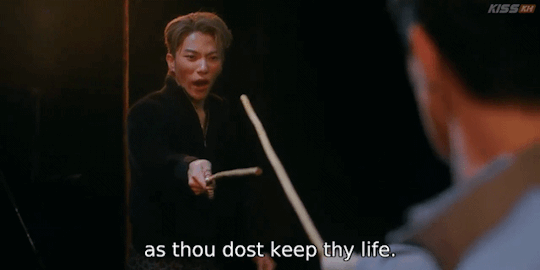
Akin during the practice swordfight is not channeling his character's emotions. His character, in the script, is supposed to be enraged, and Akin here is personally annoyed. But instead of channeling either emotions through facial expressions or words, he moves instead. He challenges Johnny by tossing him the prop, then lets the natural adrenaline of the fight build his anger. In the end, he actually encouraged scene partner Johnny to be mad, too.
Just like Jin, Akin Alba'd Johnny into another sham emotion: anger.
But for Johnny, this was the first time someone actually removed him from his Dissociation. Someone elicited an emotion from him that felt natural. He was annoyed and cocky when he came in. At the end, he was angry.
And much like how crying mimics arousal, in the Alba Method's emoting chart, anger mimics sexual tension.
(The difference in the chart is that arousal is slow-building. Sexual tension is sudden. This would explain why Jin wanted to woo Akin, while Johnny wanted to have sex with him immediately).
Additionally, dissociation practitioners in HOLLYWOOD often find themselves vulnerable to sham emotions. The five I mentioned up there went on to couple up with or marry (multiple) people who were present in their films--costars, producers, directors, etc. Notoriously, these relationships do not last because again, they are shells for their characters. The moment they FEEL that someone is making them experience a human emotion outside of their character, they get attached. But do these last? No, because they are sham emotions.

Johnny's attraction for Akin is a sham because he's so dissociated, he can't determine what's real and what isn't. All he has is his reaction to Akin, and Akin makes him feel something different. In another universe, one without a Jin and one where Johnny is a decent human being, maybe he would've been able to pursue Akin. But just like Brad and Angelina' marriage, or any of Johnny Depp's five co-star girlfriends, I doubt it would have lasted very long.
Disclaimer: I am not implying that MewGulf or BossNoeul are ACTUAL COUPLES. I believe the opposite-- you can check my dash for previous posts on the matter. I respect all of their past, present, and future significant others. I mentioned them as examples-- please don't come after me stans.
Trust Johnny to give me a hard time analyzing his trash character. This was so long and I apologize. Stay kooky, folks.
#top form the series#top form#smartboom#the boy next world#thai bl actors#bossnoeul#mewgulf#boss chaikamon#noeul nuttarat#johnny#mew suppasit#gulf kanawut#smart chisanupong#boom raweewit#method acting#acting techniques#this took so long#tharntype
89 notes
·
View notes
Note
When it comes to problematic content in QL, everyone has different tolerance levels, and different definitions for it. For you personally, how much is too much? And given that some of your faves/constant rewatches may not have aged well, do you adjust your tolerance as you go, do you just ignore it/tune it out, or do you watch, cringe, and carry on? Does problematic content make you lose love for something with time?
Hum, complex question.
I guess it's usually context and origin for me. Like I forgive Japan stuff I won't take from Thailand because it's... Japan, kinky and boundary pushing is what they do. I don't always like it, but I will usually watch it. I understand their POV and style. And more importantly, so do they.
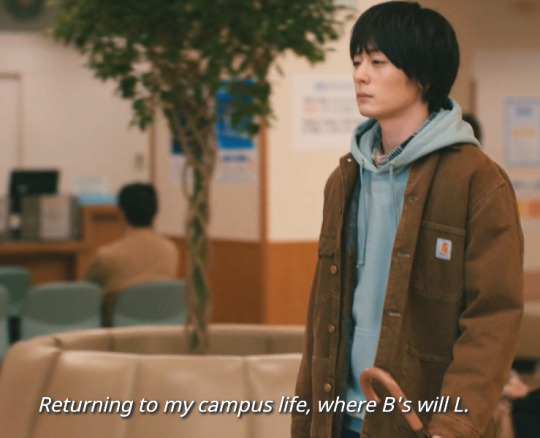
Certainly that has to do with how well established Japan is both in BL and as a film industry. But there's something more going on. They usually have something to say when they trigger, something thoughtful and provoking about culture, or queerness, or the BL genre.
Where as Thailand doing something similar will come off as clumsy and puerile, like they are teens who don't know any better and are just poking at their audience to see what kind of reaction they get. Or worse, don't even realize when they make a misstep - they just needed it for plot or are executing a tired trope.
I want finesse with my abuse!
I don't mind being manipulated, but I can't catch it in the act. I need to notice it after, and then I make tiny clapping noises.
For me too much is often when it's too predictable in the wrong way, or when it's poorly executed. Like rape just for a plot point. Or lack of consent when it makes no sense for either character or story arc.
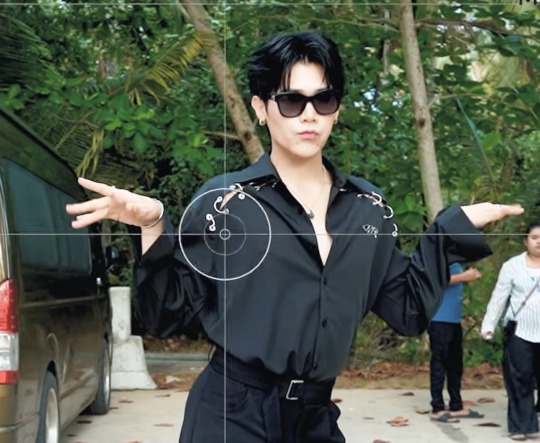
I don't like it when poor writing hits me up side the head. Like (and I will harp on this forever) did he have to steal that key and break into his hotel room? Did we all have to overlook it and think, for some reason, that was okay? It wasn't necessary for the plot. It was lazy writing.
I hate lazy writing.
I'd rather bad writing.
How do I put this?
If Japan had done that, it would have been some weird creepy edgy stalker aspect to the seme's character and it would have been purposeful. The dirtiness of it would have been part of characterization. Undies would have been stolen. The lens would have told us to find it off-putting. It would have been done with intent.
Thailand's lens often makes bad/stalker/creep behavior seem normal or acceptable.
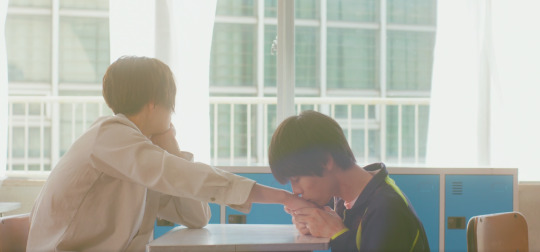
If Japan reads your private journal we, the audience, will all know how gross that feels. The grossness will be part of the creepy kinky plot. If Thailand does it... it's just passed over as fine. Or worse, romantic.
Japan does its violations with intent. Because they like the edge. They want to make us a little bit uncomfortable... at all times.
Thailand does it with a blunt butter knife and expects us to overlook a character flaw.
Back to your question...
So given it's a BL producing country that I know is clumsy about this (like Thailand) sometimes I notice and get annoyed, and sometimes I sigh and it doesn't bother me. Often that has to do with my mood. Sometimes it's the chaos of the show. Like with say Pit Babe, or The Sign, eventually I'm just overwhelmed by the absurd crazy of it all. Probably because they clearly aren't taking themselves seriously, the whole darn show: cast, crew, production, everybody.

Sometimes the violation in question is simply not a trigger for me so I don't mind.
Sometimes it reads as a kink and then I kinda like it (Taiwan will do this a lot).
Sometimes I don't even notice.
Yes, certainly I have dropped show or moved on from rewatching older stuff because now it bothered me, where once it did not (cough cough TharnType).
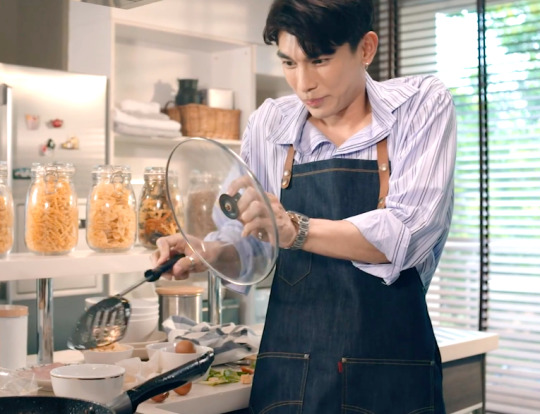
But others I still understand (if not love) because they say something about the time they were made and what the genre was then, like Takumi-kun.

Some stuff I loved so much when it first aired and still love with such nostalgia that I don't really see its flaws. UWMA is likely one of those. It's always great to me, even on rewatch, even after 810 other shows.
But I think UWMA might not be great to someone who started watching BL in 2022 or comes to the genre out of Korean BL, for example.

Does problematic content make you lose love for something with time?
Sometimes but not always.
It's all in the nuance, I guess. Mine, what I bring to the show, my willingness to understand its origin and forgive it its sins, but also the show's nuance and its execution of story.
(source)
#asked and answered#a philosophical intent#the nature of lens and point of view#nuance#thai bl versus japanese bl#tharntype#takumi-kun#problematic content in bl#triggering content in BL
69 notes
·
View notes
Text
Happy The Boy Next World Day! I was chatting with friends about how this show fits into the others in the MeMindY orbit and made this list, so figured I'd share it here too for anyone curious. Keep in mind this is for the shows only; I understand that in the novels there is some tenuous connection between these two universes, but the shows have avoided breaking the laws of quantum physics thus far.
MAME Cinematic Universe A

Love By Chance
TharnType 1 & 2
Don’t Say No
Love Sea
The Boy Next World
It all comes back to Type as the center of this world. Love By Chance and TharnType take place on the same campus, with Type appearing in LBC and Pete appearing in TT for cameos (Tharn's ex Tar also appeared in both shows in a minor role). Don't Say No continues the romance that started as a (very messy) side plot in TharnType 2 after Fiat tried and failed to hit on Type. Love Sea is connected to the TT world by Rak's friend Connor, who is dating Type's childhood bestie. And The Boy Next World is about Cirrus and Phukan, Type and Tharn's neighbors and Tharn's cousin, who originally appeared in TT2 as an established couple.
MAME Cinematic Universe B

Love in the Air
Wedding Plan
This is the smaller of the two universes thus far, connected most explicitly by Prapai and Sky's wedding. Prapai and Sailom run in the same rich people circles, and it's at Prapai's wedding to Sky at the beginning of Wedding Plan that Sailom sees Namnuea and decides to hire him for his own wedding. Payu and Rain also appear in WP to get engaged. I'm still hoping we'll get another show in this universe so we can see their wedding and also bring back Nuea and Lom.
#the boy next world#tharntype#love in the air#wedding plan#love sea the series#don't say no#love by chance#thai bl#mamecu#shan shouts into the void
131 notes
·
View notes
Text
#thai bl#sotus the series#2gether the series#2gether#bad buddy#the eclipse#not me the series#tharntype#2 moons the series#manner of death#kinnporsche#he's coming to me#until we meet again#uwma#a tale of 1000 stars#pit babe the series#pit babe#and now someone told me i wrote KinnPorsche wrong so i apologize for that😶🌫️
529 notes
·
View notes
Text
#thai bl#together with me#tharntype#cause youre my boy#uwma#dark blue kiss#sotus#sotus s#theory of love#itsay#ipytm#2 moons 2#2gether
93 notes
·
View notes
Text
15 Day BL Challenge 2K24
The full challenge can be found here.
Day 9: Most Visually Pleasing Love Scene
Let's get into the colored love scenes. The ones completely bathed in a singular color to evoke a certain emotion fueling the love scene. IDK what the colors mean 98% of the time but I know the color was a deliberate choice.
The Green Bathroom Scene in KinnPorsche. The way I was OBSESSED with this scene. I could watch it for 10 hrs straight and scream and squeal like it's the first time.
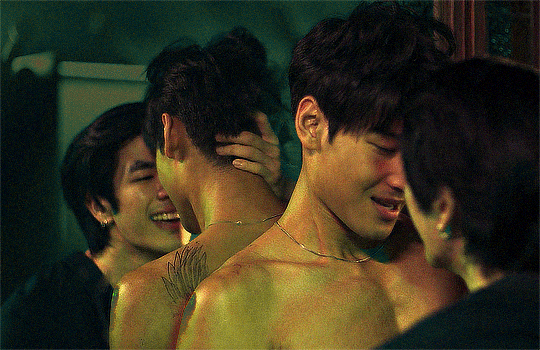
The Blue Scene in For Him the Series. Between the blue lighting and Nail allowing Him to undress him completely (jewelry included) I was GAGGED. It was such an eye grabbing scene.
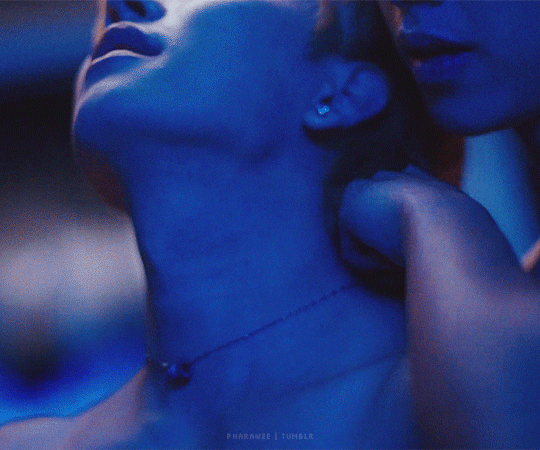
The Pink Scene in the Sign. What can I say about this fucking scene other than PERFECTION!? I liked that we got two love scenes wrapped in one bright neon pink bow, but specifically when they move to the bed and Phaya is PLASTERED again Tharn's back?? The silent consent?? Tharn biting his thumb as Phaya entered him?? *Chef's Kiss*
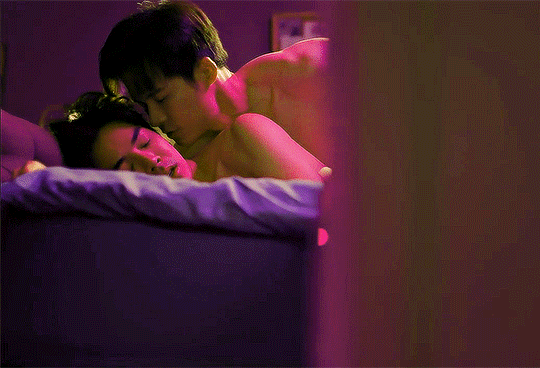
But also...any type of lifting in a love scene??? Idk man it tickles my brain and I LOVE to see it! Specifically Tharn lifting Type in the shower in TharnType s2. Honestly...Tharn lifted Type's big ass quite frequently.
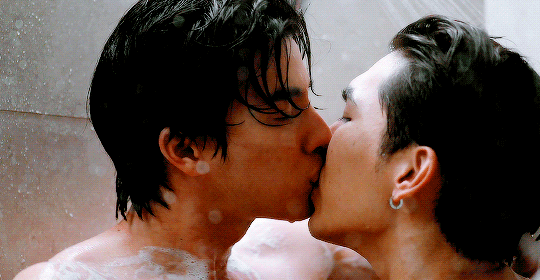
Oh also that one love scene of Charlie railing Babe against the locker room mirror. I enjoyed every scene of Babe getting railed though.
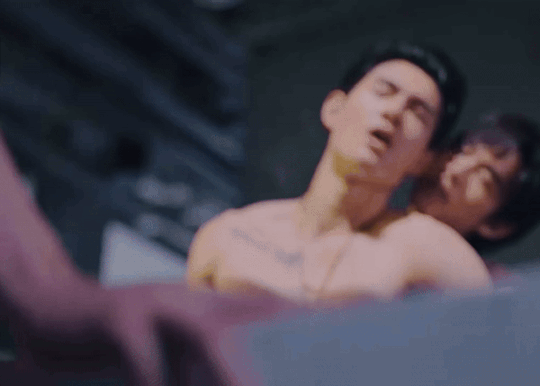
And the Daddy Couch Scene in Love in the Air. Like that was a treat for me. I prayed for it and was gifted. It was for me.

#blchallenge2k24#kinn x porsche#kinnporsche the series#nailhim#for him the series#phayatharn#the sign#tharntype#tharntype the series#tharntype 2: 7 years of love#charliebabe#pit babe#pit babe the series#payurain#love in the air#love in the air the series#the sign the series
582 notes
·
View notes
Text
No matter how angsty the upcoming episodes get, just remember that this is Cirrus and Phukan in their epilogue
69 notes
·
View notes
Text
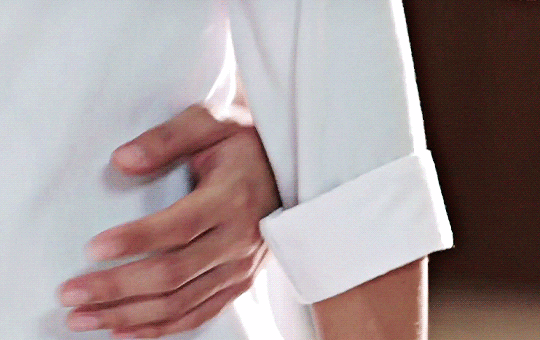

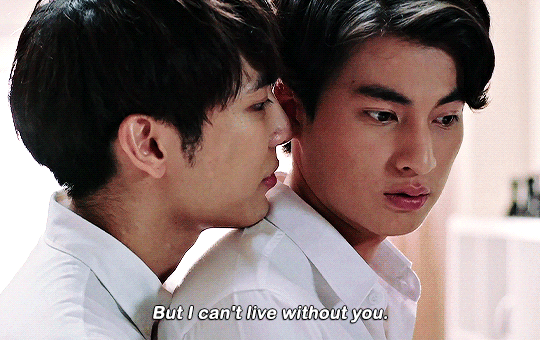
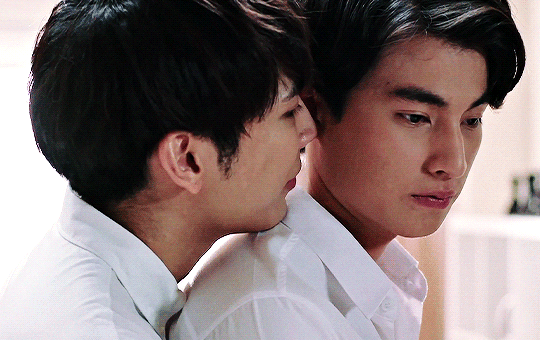

THARNTYPE (2019)
#tharntype#tharntype the series#mew suppasit#gulf kanawut#tharntypeedit#sasa gifs#ttep5#don't ask me what i've been doing for the last 16 hours or so
231 notes
·
View notes
Text
while you were out having nc scene discourse, i studied the blade(watching shows with gay sex)
#thai bl#bl series#kinnporche the series#pit babe the series#love in the air the series#love sea the series#tharntype#playboyy the series#bed friend the series#cutie pie the series#naughty babe the series#gap the series#my marvellous dream is you#blank the series#only friends the series#japanese bl#korean bl#taiwanese bl#kiseki: dear to me#my personal weatherman#big dragon the series#my stand in the series#the sign the series#wandee goodday#iwtv#interview with the vampire
148 notes
·
View notes
Text
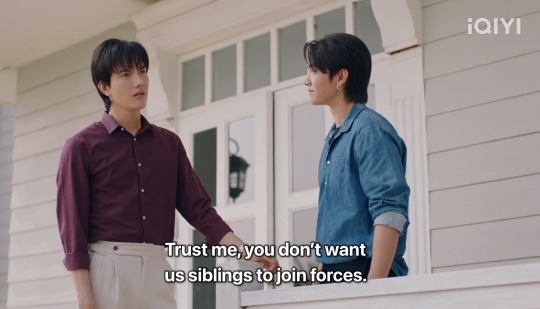
1v1 Cirrus vs Tharn in 4K res when?
59 notes
·
View notes
Text
MAME & BL Literacy Part 1
Another MAME show is airing and I thought it was good time to discuss what makes that author controversial.
As usual, critiques and corrections are welcome.
-
For those who don’t know MAME is a unique Thai BL creator. I have discussed in a previous post (that can be found here and here) how Thai BL is lacking in BL literacies. MAME is one of the exceptions. This is because:
she is a BL author & hence, one of the creators of BL literacies
she studied BL and its production academically [you can find her research output by searching her name: อรวรรณ วิชญวรรณกุล]
then she started producing live action BL.
In an industry which is lacking in BL literacies, what she brings to the table is fu-culture (BL fan culture) in all its glory. Unfortunately, the live action audience who are fans of sweet BL, have a hard time adjusting.
This is an exploration of response to her works, starting with the review of Love by Chance @waitmyturtles discussing all the ships in that series: AePete, TinCan, TarTum and KengklaTechno. This pretty much ties up what I identify as the first issue with BL literacies deficiency and MAME’s knowledge.
Here are some typical narrative progressions for a (Japanese) BL:
あまあま – sweet
ユニーク – unique
シリアス – serious
邪道 – evil road (Jadō)
王道 - royal road (odo)
Any theme/one-line plot can choose to take any of these narrative progressions. Moreover, Thai BL usually originates online which allows for innovation in narrative progression.
AePete
In Love by Chance AePete follows the typical sweet BL narrative progression. Sweet BL is characterised by an overall sweet flavor (characters, mainly the pairing, would be sweet in behaviour and motivation) and relationship progression is pretty smooth. This is the narrative progression that GMMTV sticks to. I have discussed their reasons as well as why it might not be a good thing in the long run here.
KengklaTechno
Their story follows jado narrative progression.
Quick note about Jado BL & Kengkla as a kichiku seme
One or more characters in a ship being emotional aggressors, physical abusers, sexual predators or outright villains is a very common trope in BL genre. These are popular sub-types (most notable: brute kichiku 鬼畜) of seme/uke/riba with these specific attributes and they have dedicated fans who thoroughly enjoy such characterizations. But these are clearly not everyone’s cup of tea. Some BL fans find these themes unbearable. That is why GMMTV and other BL live-action producers who don’t want to upset any of their audience members usually:
avoid such characterizations all together especially with sweet narrative progression
tries to soften such characters into more universally palatable forms
tries to redeem those characters by getting rid of those with odo – this is what currently airing My Stand-In would do.
make them villains – never making them the protagonists who gets any kind of happy ending
This is done not to trouble the average audience’s worldview (世界観) and is clearly a low effort and low skill (in terms of BL literacies) approach. But since a lot of audience don’t appreciate villain-like characterization, it is clearly low risk, no chance of a backlash from angry audience and the best method for assured money making.
Occasionally BL live-action producers venture into the risky terrains, especially with jado. The Japanese does it a lot, usually in movie format. China and Taiwan also delve into jado fairly regularly. But live action Thai BL seldom does anything commercially dangerous.
In a jado BL, a character might do terrible things and manipulate the other character(s) in the ship. But won’t feel remorse, apologize and improve for better. This is a violation of the expectation placed on characters on sweet narrative progression. Sweet BL audience do not expect characters in a ship to be anything but good to each other, especially after they have become a couple. While audience don’t mind characters making mistakes, in this narrative progression audience also expect characters to learn from their mistakes and to grow closer by earning and giving forgiveness.
In jado BL that focuses on characters being villains, there are no such expectations. These BL work within the confines of their own worldview which don’t necessarily match with our IRL worldview. Characters are allowed to act in ways that goes against our everyday perception of what is right and what is wrong. Neither the characters nor the audience expect the characters to right their wrong, to apologize or to get punished, through judicial procedure or otherwise. Happy endings are not after reparations and resolution of issues, it would be in spite of those. Bad endings aren’t necessarily punishments for bad actions committed throughout the narrative, that’s just the ending of that story. Unlike with the BL with sweet narrative progression, these BL are not necessarily stories of two or more guys falling in love. Neither is their love (if at all there is love) expected to be healthy and wholesome. (It can be wholesome but it is just as well if it is not.) There are expectations from such narrative progressions too and resolution to most issues aren’t among those expectations. Clearly not everyone’s cup of tea, especially if they expect BL to be didactic like fables.
Problem getting papered over is the expected approach in jado. When characters get together/get back together with “problems” never really dealt with, it is proper meriba (merry bad ending). Plain bad ending where there is no resolution is also typical in jado BL.
Moreover, it is difficult to sell BL with jado and other narrative progressions. It becomes even more difficult to sell branded pairings when the characters they play are not impeccable. It is unlikely that actors playing bad guys can sell products for advertisers. (Imagine the characters from The Effect being in ads together!) It is even more unlikely that fans would go broke behind wicked characters and would want to attend fan-meetings and concerts featuring them in some way.
Kengkla is two-faced and an excellent yandere. He appears to be a cute and innocent junior in front of Techno. Audience also gets to see him in Machiavellian mode. This is something that Techno doesn’t have access to, at least in Love by Chance. Techno’s brother is his facilitator in the narrative, which in turn makes him two-faced too. Techno is not omniscient and Kengkla manages to trap him. And that’s where Love by Chance ends.
TarTum
There pairing is an excellent example of MAME’s skilled employment of BL literacies. TarTum is a sweet BL, complicated by them being step-brothers. While their pairing is barely odo, Tum as a character has a complicated odo progression. Horrors from his past haunts him. The journey is going to be complicated. It won’t be linear. There would be slip up on his part and that of others. But there’s light at the end of the tunnel. Those who love odo do so because of the pleasurable pay off, much more than sweet BL. It is a rollercoaster, and that’s why fans like it.
TinCan
This is another pairing with sweet narrative progression but with a rare dynamic: weak seme x weak uke, i.e., neither of them is strong in their pursuit. This is a notoriously tough dynamic to write, so much so that there are relatively few BL with this dynamic.
Multiple Pairings in a Piece
This is something I personally appreciate a lot. It is not often that we get a piece with different pairing with different types of narrative progressions. Authors choose this method and build universes so that they can reach the biggest audience.
A lot of people enjoyed Love by Chance because they could enjoy AePete. While I understand, I don’t relate to that. AePete was my least favourite pairing among them all. I enjoy dangerous characterizations over subdued ones and prefer a meriba over a happy ending. While there are plenty of BL media with those, they are rare in live action. In my first watch, I was constantly tempted to find fan-edits of every couple other than AePete. So, what is time wasted for some is actually really enjoyable moments for another. MAME gets that and I appreciate her for that.
Queerness, heterosexism and ‘Asian’ culture
@waitmyturtles also discusses “a kind of macro cishet perspective on AePete relationship” in relation to “Ae’s randiness and jealous tendencies” and Pete’s response or lack thereof as well as “Ae not being able to take Pete’s help, and Ae’s tendency towards stereotypically masculine POVs and behaviors” tied to “MAME’s story structure here is based in Asian cultural homophobia, in stereotypes of how the queer community should act by way of societal expectations in Asia.”
To unravel that:
I don’t know what “cishet perspective” means in relation to AePete, a pairing consisting of two androphilic male characters. I also don’t know what were the expectations on Ae and Pete in terms of randiness and jealousy.
More interesting I think is the question underlying the statement about Ae’s performance of “stereotypically masculine POVs and behaviors”. Now, what does that mean? In order to understand that it is important to figure out which type(s) of masculinity Ae would subscribe to based on his class, ethnicity and where he comes from (Thai masculinities show considerable variation with location). It will be meaningful to evaluate Ae’s behaviour with respect to: a) what he thinks is the “manly” thing to do b) what Pete does
Take “Ae not being able to take Pete’s help” for example. In their 2021 paper ภาพแทนชายรักชายในนวนิยายยาโออิ เรื่อง รักนี้บังเอิญคือคุณ [The Representation of Homosexual Men in the Yaoi Novel: My Accidental Love Is You] Phuwadech Doungmanee, Panunda Lerlertyuttitham & Natthanai Prasannam goes deep into this:
MAME employs four typical prejudices against male homosexuality perpetuated within the Thai society to create conflicts within the plot: 1) male homosexuality unacceptably deviates from the social norms 2) male homosexuality must not be “out” 3) male homosexuality brings disappointment and shame to the family, and 4) male homosexuality cannot earn true love; love must be purchased instead.
Pete trying to purchase Ae’s love is implied when he is offering ‘help’. This is a stereotypically masculine behaviour and an elitist one at that. As with other stereotypes listed above, this one too gets treated well (with Ae’s refusal to accept) even thought it might not seem so from a Western heterosexist lens.
Along with discursive clashes challenging earlier beliefs, those who hold the prejudices tend to be judged by poetic justice. The author thus educates the society and reading public on alternatives views in relation to male homosexuality. (source: The Representation of Homosexual Men in the Yaoi Novel: My Accidental Love Is You)
There is no one Asian culture. Here are the three popular types of masculinities in Thailand (these are very different from Malayali and Tamil masculinities I am personally familiar with):
Monk
secular male - chaai chatri (ชายชาตรี): embodies typical masculine features such as ‘authority, courage, self-assurance, physical and emotional strength, and sexual prowess’ as well as someone who ‘would under normal circumstances control his sexuality as much as possible and be loyal to his family.’
lower-middle-class - nak leng (นักเลง): ‘a man who is brave, daring, risk-taking but also fair.’ In more recent decade: ‘a man who is tough, loyal to allies and a playboy with numerous sexual affairs.’
Both Ae and Pete are very masculine in very different forms. MAME is not only familiar with different forms of masculinities and femininities, and their region-specific variations, but also plays around with it a lot. The male femininity is also achieved in both the characters in a similar manner. All of this might easily escape the audience members who have limited understanding of Thai masculinities and femininities.
Pete isn’t shown to be unsettled by Ae’s randiness because it is an interplay of two different masculinities done with grace. Pete not only plays the polished, prince-role to a kunlasatree (กุลสต กุ รี; a stereotypical good woman, defined as ‘proficient and sophisticated in household duties; graceful, pleasant, yet unassuming in her appearance and social manners; and conservative in her sexuality’), he is also an out-and-out chaai chatri.
Physical Relationships and Explicit Content
One of MAME’s contributions to BL is in the toppling of certain beliefs, guided by sexism, BL live action creators were operating under prior to her.
Sathaporn Panichraksapong, an MD of GMMTV, a major producer of BL series, claimed that audience members who are mainly heterosexual women look for romantic relationships among the characters rather than sexual relationships.
We know that our audience are [sic] women. Women want to see only two boys having romantic moments together. They don’t want to see sex. Sexual relationships in BL are for a gay audience. That’s why in SOTUS the Series we have only two kissing scenes. With only these, audiences were already screaming. This is enough for them. (Interview with Sathaporn, GMMTV, 10 Aug. 2017)
Jirattikorn, Amporn. “Heterosexual Reading vs. Queering Thai Boys’ Love Dramas among Chinese and Filipino Audiences.” (2023).
As Jirattikorn goes on to highlight, this [wrong] perception about the audience (“women”) have changed ever since.
While early BL series tend to portray pure love without showing many sexual relationships, later BL series started to show more sex scenes between the two male lead characters.
Jirattikorn (2023)
Trauma & Porn
Itai Itai Itai (if you know, you know)
To claim that it is Asian cultural homophobia that MAME leveraged in Love by Chance through the inclusion of gang rape, incest, and unhappy ending is doing a disservice to BL and other queer genres including gei comi, all of which are well known for both trauma and porn. Aof Noppharnach and Cheewin’s lack of BL literacies is evident in their works. The way Aof Noppharnach shamed the use of the term เมีย ‘wife’ in Bad Buddy in spite of its usage by queer people, especially the little people among them, is evidence enough of the contempt and disregard he can bring in through his positionality as an “auteur”. To compare him to MAME is a little callous, especially when MAME constantly questions positionality and power through the stories she tells.
MAME’s trauma or lack thereof is none of anyone’s concern. So is what she does with it.
But the assumption that trauma in BL is a product of an author who themselves went through it is ludicrous and ignorant because BL from the days of tanbi (and its predecessors) have been engaging with it. There is already half a century’s history of BL with trauma and taboo themes.
-
you can find the review discussed in this post here:
This is Part 1
Part 2
Part 3
Part 4
#mame#love sea the series#love by chance#tharntype#dont say no#love in the air#wedding plan the series#love sea#bl thai#thai series#thai bl series#thai bl meta#thai bl#love in the air the series#bl drama#asianlgbtqdramas#asianlgbtqmedia#bl series#danmei#bl novel#boylove#fujoshi#yaoi#bl tropes#bl trivia#bl literacy#boy next world#love in the air koi#asian ql#thai ql
186 notes
·
View notes